Shaping
HANIKU, HIRANIKU (surface meat)
The edge surfaces of Japanese swords are convex
or "bevel" ground.
They can be finely bevelled or heavily bevelled, that
is, less or more rounded in profile.
The Japanese concept for this is "Hiraniku" and literally
means "edge or surface meat". Hiraniku is an important characteristic
of Japanese swords.
A sword with good "meat" (Niku) has a robust and strong
edge. In blades with little or no hiraniku, the edge is weaker. The degree
of Hiraniku largely dictates the blades cutting power.
HANIKU = The meat or bevel of the cutting surface.
HIRANIKU = The meat or bevel of the whole cutting surface.

HA-NIKU or HIRA-NIKU, these two words have almost the
same meaning. Ha-niku tends to mean the meat in the hamon area, and Hira-niku
tends to mean the meat of the whole cutting surface.
A cutting surface with full meat (well shaped)
The cutting surface is full of meat, so the cutting edge
is tough.
Good for taking on armour.
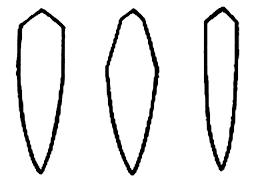
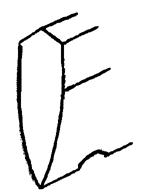
A flat cutting surface (poorly shaped)
The cutting surfaces are flat, so the edge is delicate.
Good for bare skin.
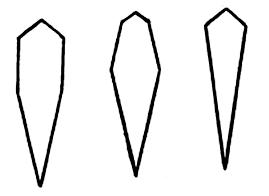
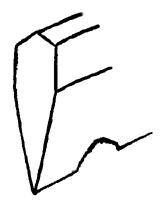
Be careful. In the showroom window, blades with flatter
surfaces look shiny and highly reflective.
Because of this, one famous polisher removes the bevel
meat from healthy blades simply to make them aesthetically pleasing.
When you hold one of these blades, you'll be disappointed
by their poor shape.
Sometimes a lattice window can help to study the surface
meat.
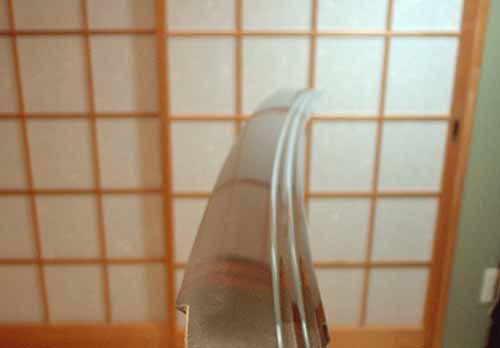
KISSAKI
KISSAKI is the tip part of the blade.
Its form is very important.
The meat must be maintained from the yokote to the very
tip of the blade.
(YOKOTE = The vertical line that distinguishes the kissaki
from the rest of the blade.)
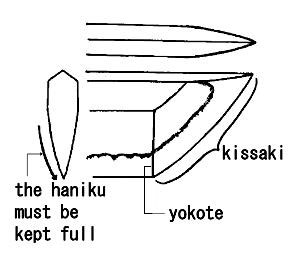
Examples of well shaped kissaki
I'm trying to show their shape with these contour lines.
Imagine them as surfaces.
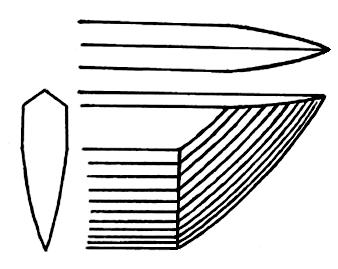
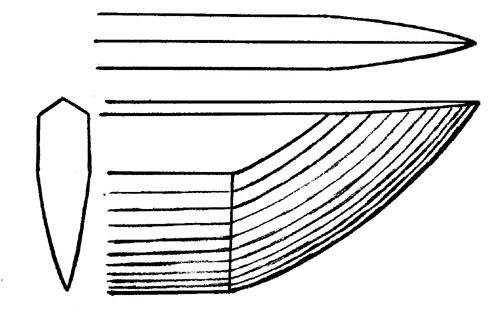
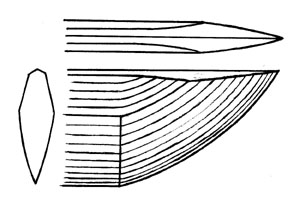
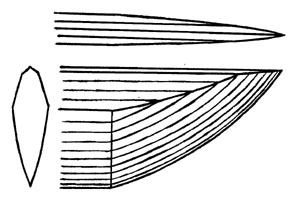
An example of bad shaping
At a glance, the next example appears well formed, but
it includes serious problem in fact.
The meat becomes thinner toward the very tip.
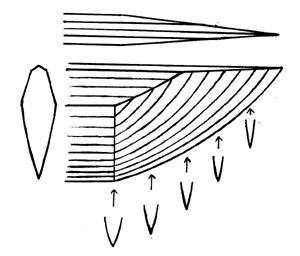
Such shaping is good for display or in pictures, but
if you held the blade you would be disappointed by the poor surface at
the kissaki.
Be careful ! One famous polisher advises converting blades with good
kissaki surfaces to the poor form simply because they are better for display.

To the left "A" is a well shaped kissaki. The edge meat
is maintained from the yokote line to the tip. This example has a high
shinogi line. Sometimes a blade shaped like this can make the top of kissaki
small.
To the right "B" is a destroyed
kissaki. The kissaki "A" was re-shaped to the kissaki "B". The bevel
meat was ground off to make the kissaki look wider.
Don't mistake the lines of a blade for its' shape. In
other words, if a blade is formed with neat and sharp lines, it does not
necessarily have a good shape. A blade is not a flat drawing. A blades'
shape has to be appreciated as three dimensional.
It is defined by properly constructed surfaces.
Home > Information, Blade > Shaping

